Since earlier times, people have been fond of using raised beds made of wood, brick, or stone. However, there has been a change in people’s choices due to more options for raised beds. The galvanized raised bed has become popular for plant lovers due to its strength and durability.
Both galvanized and wooden raised beds have their pros and cons. Wooden raised beds are cheaper, more customizable, and easily available however they decay over time and need more maintenance. Galvanized raised beds are expensive upfront but last longer and require minimal maintenance.
This article will provide a detailed comparison between wooden and galvanized raised beds and help you decide which raised bed is best for your garden.
If you want to build a raised bed in your garden and need clarification about which material to select, this article is the perfect guide.
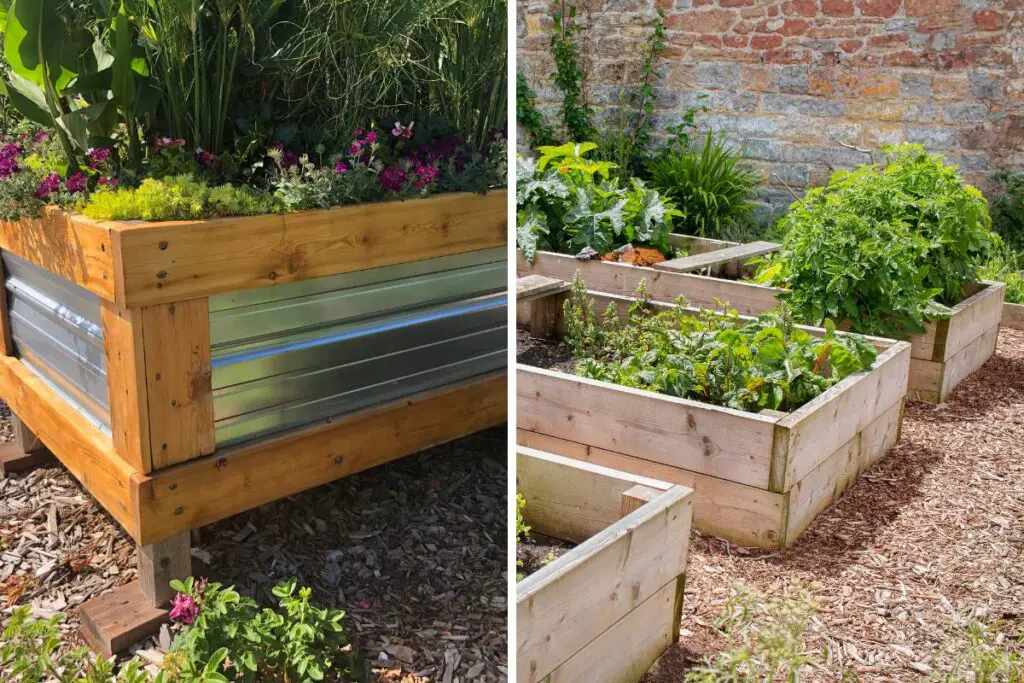
What factors to consider when building a raised garden bed?
Before comparing wooden raised beds vs. galvanized ones, we must consider a few factors affecting their selection.
Garden beds are made from concrete, bricks, lumber, metals, or straw bales.
Whatever material you choose, you should remember that each material differs from the others in terms of quality, price, durability, aesthetics, etc.
These factors are important to consider before you purchase your raised garden bed, as they will help you select the best material.
The factors are as follows:
Shape and layout
First, it is important to consider the shape and layout of the raised bed.
The material flexibility of the raised bed varies from one to another.
For example, materials like plastic and steel are more flexible than others and come in a wide range of shapes and sizes.
On the other hand, materials like concrete or wood are rigid and mostly come in rectangular or square designs.
Looking for gardening supplies? We have tested 100's of products before recommending them to you guys. Check out our best pick below:
| Image | Gardening Supplies | Best Price? |
|---|---|---|
 Top
Top Top
Top | Raised Garden Bed Kit | Check On Amazon |
 | XLUX Soil Moisture Meter, Plant Water Monitor, Soil Hygrometer Sensor for Gardening, Farming, Indoor and Outdoor Plants, No Batteries Required | No Results |
 Top
Top Top
Top | 82 Pcs Garden Tools Set and Extra Succulent Tools Set | Check On Amazon |
 | Joeys Garden Expandable Garden Hose with 8 Function Hose Nozzle, Lightweight Anti-Kink Flexible Garden Hoses, Extra Strength Fabric with Double Latex Core, (50 FT, Black) | No Results |
 Top
Top Top
Top | Dual Chamber Compost Tumbler | Check On Amazon |
 Top
Top Top
Top | Sunnyglade Plant Stakes | Check On Amazon |
 Top
Top Top
Top | Organic Cold Pressed Neem Seed Oil | Check On Amazon |
 Top
Top Top
Top | Mighty Mint Gallon :-Insect and Pest Control Peppermint Oil | Check On Amazon |
 Top
Top Top
Top | Scotts DiseaseEx Lawn Fungicide | Check On Amazon |
 Top
Top Top
Top | Jacks Classic 20-20-20 All Purpose Fertilizer | Check On Amazon |
 Top
Top Top
Top | 30,000 Seeds Pollinator Attracting Wildflower Mixture | Check On Amazon |
 Top
Top Top
Top | Survival Vegetable Seeds Garden Kit-Over 16,000 Seeds | Check On Amazon |
Life span
The lifespan of the raised garden bed depends on the material it is made up of.
Whichever material you select, make sure it is durable enough.
A durable raised bed will get less affected by moisture, unwanted pests, and outside elements.
If you want to keep a raised bed for a short span, you should select a less durable material, e.g., wood.
But if you want to keep a raised bed for more than 20 years, consider selecting a durable, long-lasting material, as it will help you to save resources, cost, and time.
Plastic, galvanized steel, or concrete block-raised beds are durable options.
Budget
The price is one of the most important factors when deciding the material for your raised bed garden.
The budget determines the quality of your product. Some materials are more expensive than others materials.
The expensive materials are of better quality and have a longer lifespan.
So, the higher the material cost, the cheaper they will work in the long run.
However, if you select affordable material, you may need to replace the raised bed every few years, increasing the cost in the long run.
Aesthetics
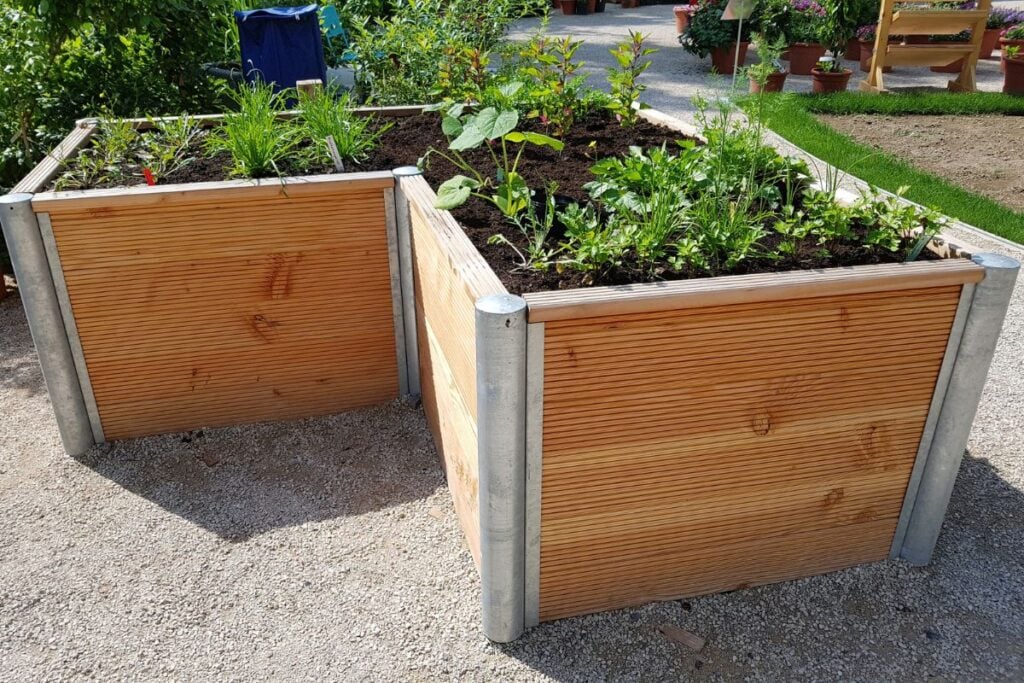
You may have your preferences when it comes to selecting the appearance of the raised garden bed.
Some people like their raised bed to have a natural look, while some likes it to be bold or colorful.
The Aesthetics depends on the material you select.
If you want something natural, select a wooden or composite lumber-raised bed.
However, if you want a colorful raised bed, you can select a plastic raised bed, as it comes in various colors and designs.
Safety
When selecting the raised bed material, we should consider whether they leach any toxin substance into the soil.
This is not a problem if you focus only on growing flowers in the raised bed.
But if you plan to grow vegetables and fruits, consider this factor seriously.
Nowadays, to encourage sustainability, we often use reused items to make raised beds.
These items may be cost-effective and eco-friendly but can harm the plants.
For example, if you use recycled wooden pallets for making raised beds.
These pallets are often treated or painted and can have some toxin substances that can enter the soil, causes chemical leaching, and harms food crops.
It’s difficult to determine the source of recycled pallets, and one possible reason for the toxins can be the paint used on them.
Wood vs. Galvanized metal raised beds.
Since we have covered the factors that should be considered while selecting the material for the raised garden bed, it is time to compare the two most commonly used raised beds, i.e., wood and galvanized metal.
Wooden raised bed
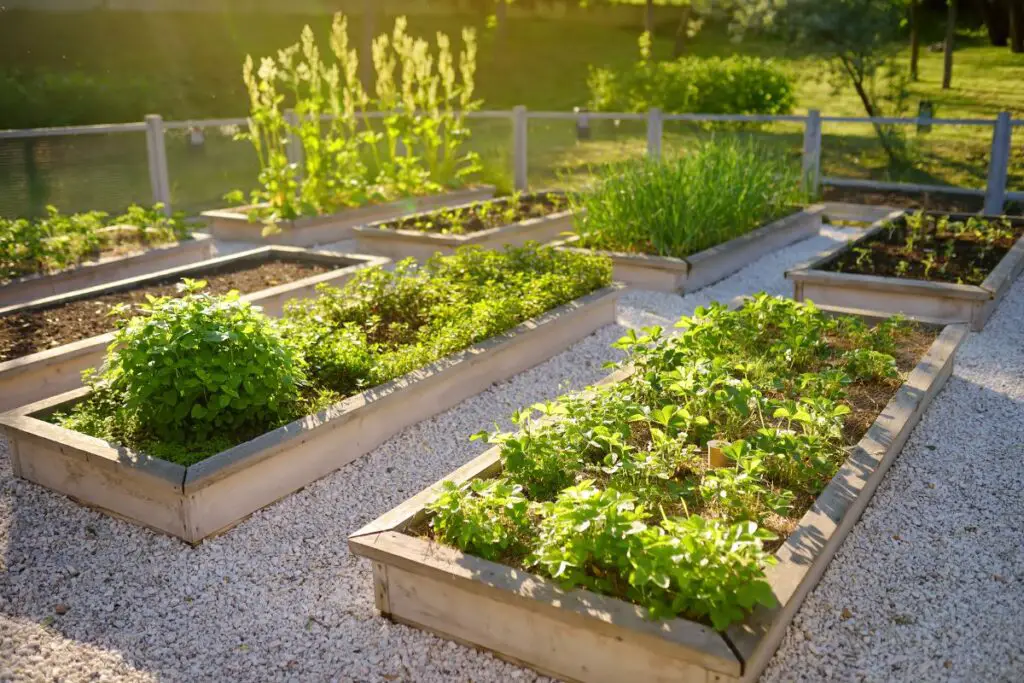
Wood is a universal building material commonly used by gardeners for many reasons. It is low-priced and easily available.
The wooden raised beds don’t last forever but still last many years without damage.
Pros of using a wooden raised bed
The benefits of using a wooden raised bed are due to its cost, universal availability, and customizability.
The advantages of using a wooden raised bed are as follows:
1. Wood is cheap: Wooden raised beds are the cheapest compared to other raised beds.
You can also prepare a raised wooden bed by recycling wood from old furniture, pallets, or curbs.
You can even gather wood from forested woodlots. However, it is best to source wood from a hardware shop.
Wood-like pine is affordable and can be used for building raised beds.
2. Wood is easy to source: You can source wood easily from anywhere, no matter in which city or countryside you are living.
3. Wood is customizable: Wood is one material that can accommodate your requirements.
You can cut lumber to your size preferences and make the raised bed according to your specifications.
But other raised beds, like the galvanized steel bed, come in predetermined sizes, and you can’t modify them according to your size specifications.
4. Wood is a good insulator: Wooden raised beds will insulate the soil better than plastic and galvanized steel.
Cons of using a wooden raised bed
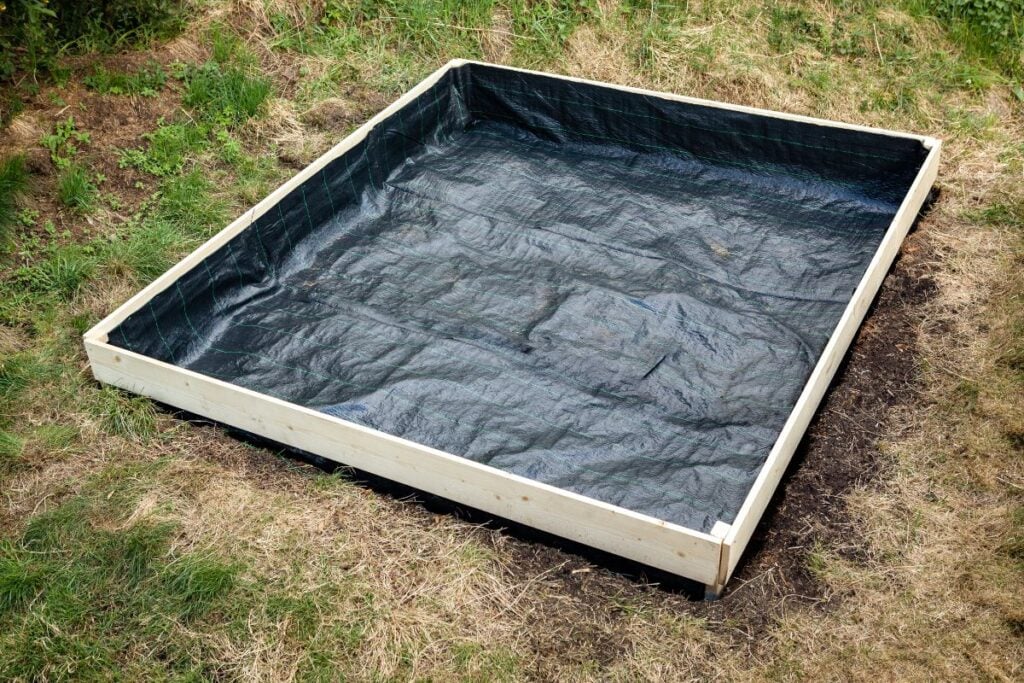
The disadvantages of using a wooden raised bed are as follows:
1. Wood is not long-lasting: The disadvantage of using a wooden raised bed is that it is not long-lasting like a galvanized steel raised bed.
The wooden raised bed will deteriorate quickly compared to a galvanized raised bed.
A wooden raised bed will hardly last 7 to 10 years and even less if exposed to a rainy and humid climate.
2. Wood will rot with time: The wooden raised bed will begin to rot with age. When the wood starts rotting, they are eaten by sow bugs and termites.
To prevent the wood from rotting, you will need to change the boards and paint from time to time.
However, if you want to avoid making changes again and again in your raised bed, you can look for other options that don’t rot, such as a galvanized steel raised bed.
Except for redwood or cedar wood, other wooden raised beds will not last more than 10 years.
What type of wood is best for your raised bed?
Woods are one of the cheapest materials that you can use for making a raised bed.
However, it depends on what type of wood you are using.
Many people use pine for making the raised bed since it is easily available and affordable.
One downside of using pine is that it is not long-lasting like other woods. The pine-raised beds can only last for 6 to 9 years.
The lifespan of the pine will decrease more if you live in a place with a humid climate.
The best wood for a raised garden bed is cedar or redwood.
It is durable and rot-resistant.
Cedar woods are expensive since they are difficult to source, but the good thing is that they can last 10 to 20 years.
You can even prepare your own wooden raised by DIY.
You will need to source wooden pallets from distribution centers, local stores, etc.
You can also get these wooden pallets in recycling centers for free or at a nominal cost.
Use these wooden pallets to make your own raised bed using your creative mind.
Make sure whenever you collect these pallets, avoid colored pallets or pallets with MB stamps on them.
MB is the symbol of methyl bromide, which is toxic for plants.
Before sourcing wood, check that the wood is FSC accredited and if you source wood from a local place, ask about the origin of the wood before purchasing it.
Galvanized raised bed
Galvanized steel as a material for raised beds is attracting the interest of many garden enthusiasts.
The companies are selling galvanized raised bed kits which you can use after assembling.
They are safe to use, durable, and can last longer than wooden raised beds.
Galvanized raised beds are costly, but it is low maintenance, long-lasting, and decorative for home gardens.
Pros of using a galvanized raised bed
The advantages of using galvanized steel as a material for raised garden beds are as follows:
1. Galvanized steel is safe for soil: Galvanized steel is coated with zinc, protecting it from getting rusted.
So, it is ideal for outdoors as it remains unaffected by rain and humidity.
The zinc coating is also food safe, so it will not leach any toxicity into the soil.
2. Galvanized metal is long-lasting: The galvanized raised bed can last for 20 years.
The galvanized steel will need minimum maintenance and fewer needing replacements.
This material will not rot or degrade and is very durable.
3. Galvanized raised beds are taller: You can prepare taller raised beds with wood, but you don’t need to make any modifications to galvanized raised beds since they are readily available in taller versions.
A taller raised bed is quite beneficial. Planting, mulching, weeding, and harvesting are easier in taller raised beds.
4. Galvanized metal has various color options: Galvanized steel beds are available in different colors.
If you live in a place with a cool climate, select a darker color that will keep the soil warm.
But if you live in a warm place, select a lighter color that will keep the soil cool by reflecting the heat.
5. Galvanized raised beds are easy to assemble: Galvanized raised beds come in small boxes, which makes them easier to transport.
They are lightweight and easy to assemble. You only need some nuts and bolts to assemble them.
Cons of using a galvanized raised bed
The disadvantages of using a galvanized raised bed are as follows:
1. Galvanized steel is expensive: Raised beds made of galvanized steel are costly compared to a wooden raised bed.
The cost of galvanized material is 3 times more than wood and sometimes even more.
2. Galvanized steel is not easy to find: Galvanized steel is not easy to source as there are fewer suppliers and the market demand is high.
Also, you can’t scavenge your own galvanized steel since there are high chances that they have already started rusting.
3. Galvanized steel will not last long in acidic soil: Galvanized raised beds can suffer from damage in acidic soil.
The zinc coating can easily get eaten by the acidic soil, due to which the galvanized steel will start rusting.
If your garden has acidic soil, you can use plastic-lined galvanized steel to prevent it from any damage.
Which raised bed is best for your garden?
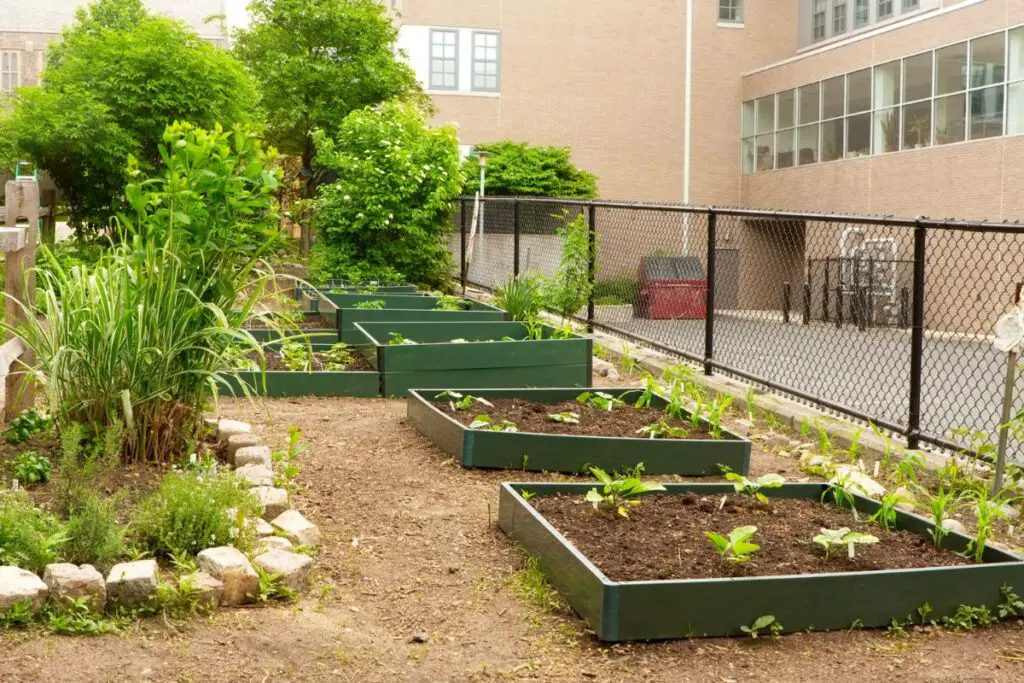
Both wooden and galvanized raised beds have pros and cons, and the selection of any raised bed depends entirely on your circumstances and budget.
Before selecting any raised bed, you need to consider how long it will last in your garden, which design of the raised bed will look best, and what will be its upfront cost.
If you don’t have any budget constraints, you can select a cedar-raised bed or galvanized steel-raised bed. They are long-lasting and will provide excellent results.
When it comes to design, it entirely depends on your preferences regarding which raised bed will match your style.
Some people like the rustic look of wood, and some like the industrial look of their raised beds.
You can select a premium cedar wood raised bed for a rustic look and galvanized metal if you want something industrial.
You can select a wooden raised bed if you have a limited budget.
A wooden bed is easier to build and provides greater design and customization flexibility.
If you are from a place with a humid climate, select a galvanized raised bed since it is extremely durable and long-lasting.
If you want a raised bed that will last for many years, select a galvanized steel raised bed.
Also, this raised bed will require less management and maintenance.
In the end, you can’t go wrong with either raised bed.
You can use both wooden and galvanized raised in your garden since both have enormous benefits.
Reference: ScienceDirect, American Society of Agronomy, Noble Research Institute, Soil for Raised Beds, Raised Bed Gardening.

